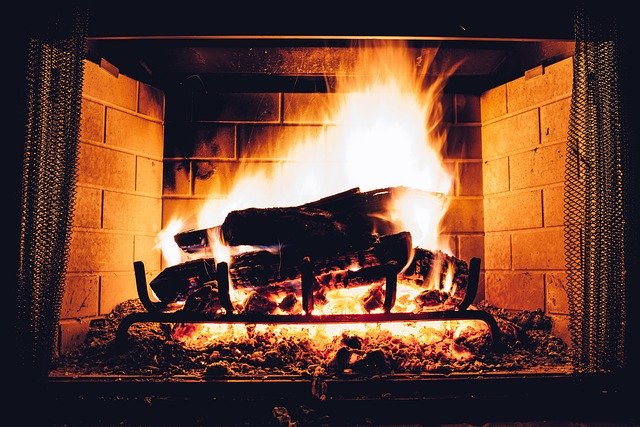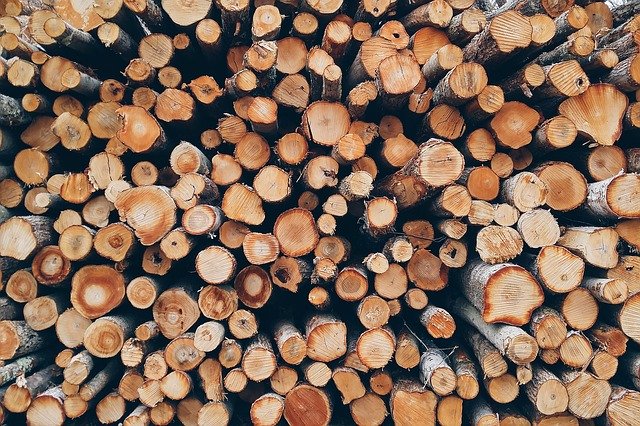Fire It Up
‘Tis the season for hot chocolates, knit sweaters, and snuggling up in front of the fireplace. Enjoy a nice long relaxing evening in front of the fire by making sure you choose the right wood. There are so many options: hardwood vs. softwood, seasoned vs. unseasoned, natural vs. manufactured. Nelson Tree Specialist of Maryland is here to help you choose the right winter firewood.
We are, of course, you are local Specialty Arborists, so it makes sense that we would know a thing or two about would.

Soft Vs. Hard Winter Firewood
If you are buying your firewood by weight, you’ll get more bang for your buck with hardwood.
Since softwood is less dense, that means there is more of it for the same amount of weight and money. This does not mean you get more heat and more burning. Softwood burns much faster, so it has to be replenished more often. You’ll go through twice as much softwood as you will hardwood.
This also means more cutting, splitting, stacking, and storing for you.
Softwood

Softwoods grow much quicker than hardwoods and therefore are less dense and lighter. They are quicker to season, or dry out, but hold more resin than hardwoods, making them ignite more easily.
But they smoke more than hardwoods, so make sure you’re using they outside for campfires or kindling only.
Another reason to keep softwood for outside use only is because it ignites hot and quick with lots of crackling, popping, and sparking. Think about throwing a Christmas tree on bonfire – huge flames, ultra-hot, but burns out in about a minute.
This is great for show or to get rid of your Christmas tree, but it won’t give you it’s stable and sustained fire.
Hardwood

Everything we talked about for softwoods, the opposite is true for hardwoods. Hardwoods:
- grow slower
- are more dense
- have less resin
- are slow to season
- provide slow sustained burning
- have little-to-no cracking and sparking
But beware: hardwoods might sound superior in most ways, but low-quality hardwood will not produce the same as a high-quality softwood. So, choose your source or provider wisely.
If you are felling your own trees for hardwood, look at the leaves to make sure. A hardwood tree will likely have leaves that turn and fall off in the fall. Locally in Maryland, we have Maple, Oak, and Beech to name a few. But if you are going this route, make sure you work ahead by one to two years. That’s how long it typically takes to season a hardwood. So whatever trees you’re splitting now for firewood, you won’t be able to use them until next year or the year after.
Seasons Vs. Unseasoned Firewood
Seasoning is just an industry term for drying out. A season word will have less wet resin and water molecules embedded in the wood. This helps the wood ignite quicker, burn longer, and smoke less. Depending on the type of wood, these are all variable.
A full seasoning can take up to two years, so be patient. Have a good dry place to and rotate your supply.
Wood may be split and burned immediately but burning before seasoning will be difficult. The water content in the wood will hinder any attempts to ignite. Then, once ignited, the wood will smoke – too much for indoor use. It will also demand your constant stoking. Adding new wood to an already lit fire will leach all the energy out of the existing blaze and likely extinguish it.
Unseasoned wood burns at a lower temperature because not all of the energy is going into the fire; some is going into evaporating the water inside the wood. Seasoned wood works in the opposite way; all of the energy is put into burring the wood and therefore burns much hotter.
If you’re in a pinch and need so start a fire, use what you can. Make sure the wood is not poison oak or some other wood containing harmful oils or substances. If you have the choice and are building you fire inside in a fireplace, choose a seasoned wood.
Natural Firewood Vs. Manufactured Logs

Natural firewood might seem like the obvious no-brainer. It’s straight from the ground, doesn’t have any manmade chemicals or additives, and seems logically more sustainable.
But manufactured logs her largely made from saw dust and plant-based wax. These are essentially large candles the burn slow and steady. They largely produce less emissions than burning real wood and are engineered to not clogged chimneys. They are made from scrap wood and are therefore fairly sustainable.
Natural firewood contains a substance called creosote. This is what leads to clogged chimneys. It is also carcinogenic.
Natural wood also has to be given more ideal circumstances to burn: It has to be seasoned, it must have appropriate airflow, and it has to be poked, prodded, and coaxed to burn.
However, manufactured logs produce less heat. So, if you’re looking for an alternative heat source to your central air conditioning system, natural firewood is the way to go.
Nelson Tree Specialist Can Help You Cut Your Winter Firewood
Don’t have the equipment to cut down that tree you’re eyeing for your winter firewood? Nelson Tree Specialist can help you pick which branches are suitable or take down the whole tree.
Winter is coming fast, and you can never tell when the temperature will dip in Maryland. Be ready and let us help you prepare your firewood this season. Contact us now to see how we can help.
